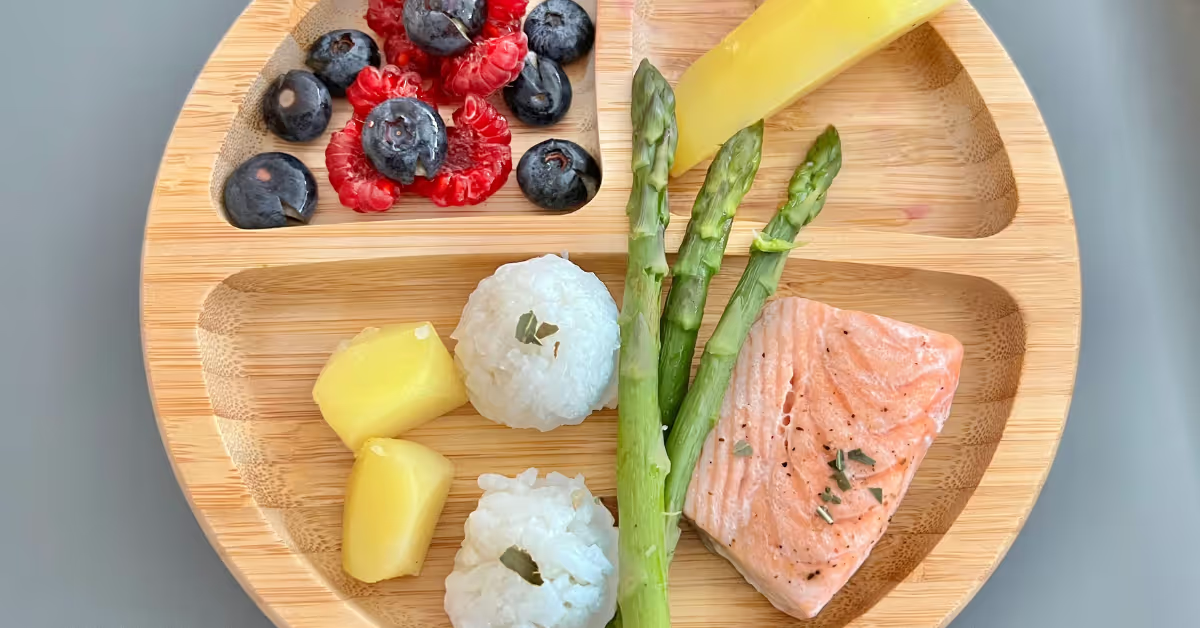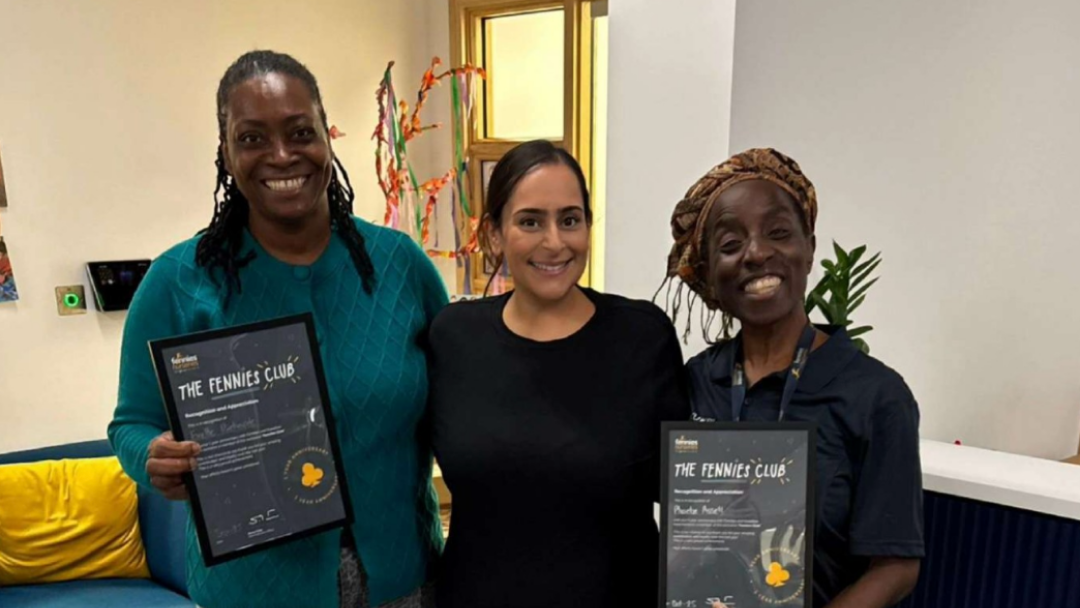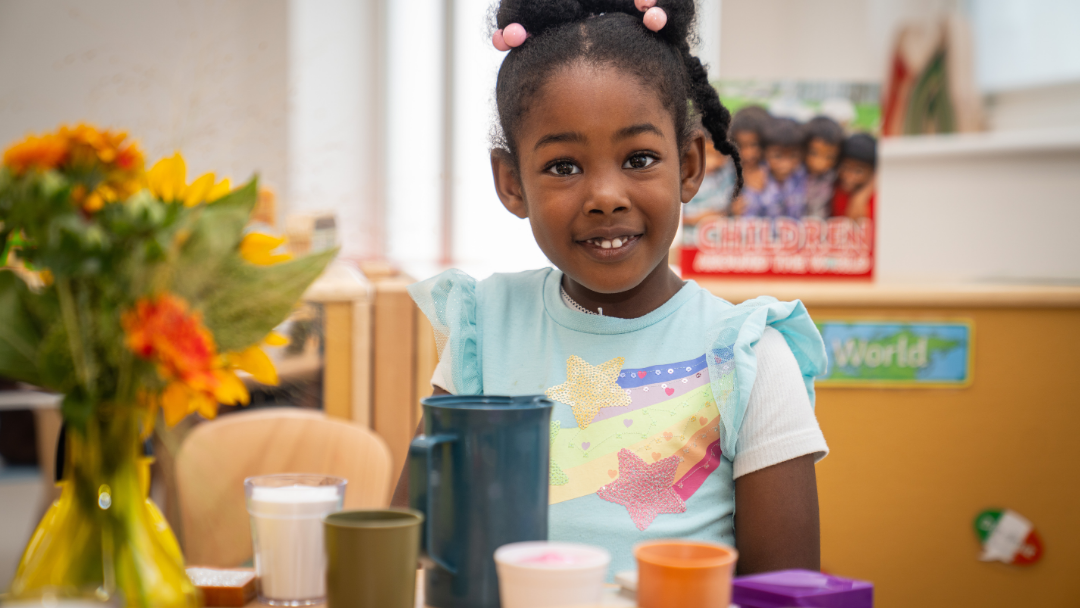In this blog Jack explores some effective ways that you can encourage nutritious choices and help build positive relationships between food and your children.
At Fennies, we believe in shaping not only children's physical fitness but also their overall health. Our PE Specialist Jack promotes healthy eating habits across each of our Fennie's sites. In this blog Jack explores some effective ways that you can encourage nutritious choices and help build positive relationships between food and your children.
Lead by example
A great way to introduce healthy eating habits at home is by leading by example, Children are incredibly observant, and by showcasing our commitment to nutritious foods, we become positive role models. An easy way to introduce this at home is by...
Model Healthy Habits
- Demonstrate nutritious food choices in your own meals.
- Emphasise balanced portions and diverse, whole foods.
- Prioritise family meals as a time for positive food examples.
Engage in Shared Activities
- Involve children in grocery shopping and meal preparation.
- Educate them on nutrition and healthy food choices during these activities
- Foster a positive attitude toward cooking and trying new, nutritious foods.
Promote Positive Messaging
- Encourage a balanced and positive view of food.
- Celebrate healthy choices without labelling foods as "good" or "bad."
- Reinforce the connection between a healthy diet, overall well-being, and an active lifestyle.

Educate Through Fun Activities!
Learning about healthy eating doesn't have to be boring. At Fennies I incorporate fun and interactive activities into my physical education sessions through games and quizzes, they are a great way to teach children about the nutritional value of different foods. This is something you can introduce at home, some of my favourite games include...
Fruit and Veggie Hopscotch
- Create a hopscotch grid using colorful images or drawings of fruits and vegetables.
- Instead of numbers, label each square with the name of a fruit or vegetable.
- Children take turns tossing a beanbag onto the hopscotch grid and then hopping through, calling out the fruit or vegetable they land on.
Healthy Food Obstacle Course
- Set up an obstacle course with different stations, each representing a food group.
- For example, create a "fruit tunnel" using a play tunnel, a "vegetable balance beam," and a "protein jumping zone."
- As children navigate the course, they engage in physical activity while associating each station with a specific food group.
Balloon Volleyball with Healthy Food Themes
- Inflate balloons and draw or attach pictures of fruits and vegetables on them.
- Create a net using a rope or a makeshift line.
- Children work together to keep the "healthy food" balloons from touching the ground by batting them back and forth, promoting teamwork and physical activity.
Making the learning process enjoyable enhances engagement and retention.

Create a Positive Food Environment
A positive atmosphere around food is crucial to building healthy eating habits in young children. Mealtimes should be stress-free and enjoyable. Encourage open conversations about food preferences and dislikes. Some great conversation starters to introduce to mealtimes include...
Favourite Fruit Friends
- Ask the children to imagine that fruits are like characters in a story. "If apples, bananas, and grapes were your friends, which one would be the funny friend, the sweet friend, or the silly friend? Why?"
Colourful Veggie Adventures
- Discuss vegetables in a playful way. "If you were a superhero and could only eat one color of vegetables to get superpowers, which color would you choose? Do you like green veggies like broccoli or orange veggies like carrots?"
Mix-and-Match Snack Fun
- Encourage creativity in combining different foods. "If you could make a sandwich with any three ingredients in the world, what would they be? Would you add crunchy peanut butter, sweet strawberries, or maybe something else? What's your dream sandwich?"
These questions help build a healthy association with eating and family mealtimes.
Teach Portion Control
Understanding appropriate portion sizes is essential for children's well-being. We utilise visual aids, such as portion control plates, to demonstrate the balance of different food groups on their plates. This knowledge empowers children to make mindful choices about the quantity and variety of foods they consume.
Encourage Regular Water Intake
Hydration is a key component of a healthy lifestyle. At Fennies we actively promote the importance of drinking water throughout the day. Before starting a PE session, I always ensure that the children have easy access to their water bottles and stop to take a drink regularly.
By educating children about the benefits of staying well-hydrated, we inspire them to embrace this vital habit. You can encourage regular water intake at home by...
Make it Fun and Appealing
- Colourful Cups and Straws: Use vibrant and attractive cups or bottles with colorful straws to make drinking water more visually appealing to nursery-aged children. You can let them choose their favourite color or character-themed cups.
- Fun Ice Cubes: Freeze small fruit pieces or berries into ice cubes and add them to the water. Children often enjoy watching the colourful ice cubes float and melt in their drinks, making it a playful and engaging experience.
Set a Routine
- Regular Breaks: Establish a routine of offering water at regular intervals throughout the day. Set aside specific times, such as after playtime or before meals, to encourage consistent water intake. Consistency helps children develop good hydration habits.
- Use Timers or Alarms: Set a timer or alarm on your phone to remind both you and your child to take a water break. Associating the sound with the break can make it a fun and anticipated activity for the child.
Lead by Example and Educate
- Drink Together: Children often mimic the behaviour of adults, so make sure you are visibly drinking water throughout the day. Having a water bottle for yourself can encourage your child to do the same.
- Educational Approach: Explain to the child why drinking water is essential for their health. Use simple and age-appropriate language to describe the benefits of staying hydrated, such as keeping their bodies strong and helping them grow. You can also involve them in choosing fruits for infused water and teach them about the importance of hydration.
Promote Healthy Snacking
Snacking is a natural part of a child's day, and we guide them toward nutritious options that fuel their bodies and minds.
By embedding healthy snacks into their lifestyle, we instil the value of nourishing choices.
Conclusion
As a PE specialist at Fennies, my role transcends physical activity. Actively promoting healthy eating habits contributes to the foundation of a healthier and happier future.
Through collaboration with parents, creative educational approaches, and a positive food environment, we inspire the next generation to make informed and wholesome choices.
FAQ
Subscribe to our newsletter
Stay up to date with Fennies news





.png)




.png)